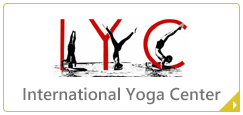ブログ
| ブログ
Facebookにて、私たちの本家本元、ビクター先生率いるYIN YOGA in ASIAの投稿を、Yin Yoga Japanの川畑友季湖先生が日本語訳してくださったものをここでもシェアさせていただこうと思います。
友季湖先生の承諾を得て掲載しています。
Yin Yoga Japan
公式ホームページは→こちら
公式Facebookページは→こちら
—
今回は、筋膜についてのお話です。
—
(転載ここから)
↓↓↓
YIN YOGA in ASIAからの転載・第4弾です。
ビクター先生の筋膜についての投稿ですが、日本語に訳してみたものの、かなり分かりにくい表現があると思います。
要約すると、柔軟性を得るには、体全体に広がっている筋膜に対して全方向に適切な負荷を与えること、身体のどこか一部分だけのストレッチでは完成しないということ。また筋膜自体が十分な水分で満たされており、それ故に滑走できるか、ということ。
その他血液循環や神経系も作用するということ。
– そのようなことが書かれています。
読んでもわからない時は陰ヨガ講座で実際に講義を聞き、体験してみることをおすすめします。
陰ヨガ定期講〜筋膜編〜
https://www.facebook.com/events/2291163334312776/
———————————————————–
(無断転用はお断り致します。ページのシェアは歓迎致します。)
筋膜のストレッチについて
ストレッチするとどうなりますか?
影響を受ける3つのエリアがあります。
1. 繊維網(*神経筋筋膜ウェブ)
2. 体液網(*循環/体液系)
3. 神経網(*神経系)
ストレッチをすると上記のすべてが影響を受けます。
影響を受けるのは筋膜のコラーゲン線維の変化だけではありません。
本質的にストレッチとは、軟組織、筋肉、靭帯組織および骨を含む繊維網の滑走メカニズムについてのものです。滑走がより効率的になればなるほど、私たちはもっと動くことができるようになります。弾力性の事実は、筋膜の水和レベル、筋膜を横切って見られる筋肉組織の量、および運動ニューロンの反応に依存するということです。
筋膜内に含有する液体は粘弾性があります。それは主に結合水の形をしており、蜂蜜の液体のように振る舞います。
つまり筋膜に力が加えられているときに、液体がより水のようになるには時間がかかります。
まず体を伸ばしたとき、すぐに滑走する効果は期待できません。
研究によると、体温が上昇すると含有している水分がより水のように変化することが示されています。
逆に体が冷たいとき、それは冷蔵庫に蜂蜜を入れるようなものであり、筋膜の液体はより堅くなります。そして体はより制限されるようになります。硬さを感じるとき、どのように制限されているエリアにもっと水分を運び込むことができるか、その液体がもっと水のようになるように内容を変える必要があります。
筋膜は体全体に広がっており、それは他の全ての組織をあらゆる方向に接続しています。
したがって、この全方向関係によって、体の広い部分に力を分散させることで、筋膜を頭からつま先まで連鎖することができます。技術的には、ストレッチが発生したときに体のどの孤立した場所も拘束されません。したがって、筋膜のストレッチは、できるだけ多くの部分を一定の動きで繋ぐことです。
エラスチンがより多く見られる筋肉の組織の部分に、筋膜の弾性成分の多くが存在します。
しかしながら、筋膜全体にわたって弾性は均等ではありません。筋膜は靭帯組織の連鎖が筋組織に飛び込んだもので、筋膜全体にわたって粗くなっています。それゆえ、いかなるストレッチの過負荷も、硬い靭帯を伸ばそうとストレッチしている間に、柔らかいエリアはもっと伸びていることを意味するでしょう。
組織の筋肉の構造と靭帯の構造の両方がその最大の可塑性に達すると、それは破断してしまうでしょう。
つまり、優れたストレッチのテクニックは、身体の広い範囲にわたる適切な量の負荷を考慮して、可能な限り滑り続けることができるように、硬いところとソフトなところのスペースを確保することを意味します。
ストレッチは、筋膜だけでなく血液供給や神経系にも力を加えます。
血液供給は組織に含まれる水分の変化を促進するためにその絞る作用を通して、組織から出入りする栄養素と同様に廃棄物を移動させます。これにより、滑走がより効率的になります。
ストレッチは最終的に神経反応によって決定されます。つまり、神経が落ち着いているとき、より滑走することができます。逆に、体が不安な状態にあるとき、体を「保護する」ためにより多くの戦いが起こります。
陰のストレッチは上記のすべてを考慮して、体が最終的にしばらくの間ポーズの中に自然に収まるように、体の広い部分に渡って最適なレベルのストレッチが起こるようにします。
Stretching Fascia
What happen when we stretch? There are three areas that will be affected :
1. Fiberous Network
2. Blood Vessels Network
3. Nervous Network
All of the above are affected when we stretch. Therefore, it is not just the changes in the collagen fiber of the fascia that are affected when we stretch. Essentially, stretching is about the gliding mechanism of the fiberous network, which include soft tissues, muscles, ligament structure and bones. The more efficient the glide, the more we will be able to move. The fact is the elasticity depends on the level of hydration in the fascia sheets, the amount of muscular tissues found across the fascia sheet and the motor neuron response.
The fluid content in the fascia is viscos-elastic. It is mainly in the form of bound water. The fluid behaves more like honey liquid. Which means, it will take some time for the fluid to become more water-like when force is being applied on fascia sheets. We cannot expect immediate gliding efficiency when we first stretch our body. Studies have also shown that when the body temperature is raised, the fluid content will change to become more water-like. Vice versa, when body is cold, it is like putting honey in the fridge, the fluid in the fascia becomes more harden. The body then becomes more restricted. When someone experience tightness, we need to look at how we can bring more fluid into the restricted area and change the fluid content to allow it to become more water-like.
The fascia sheets spread wide across the body and it connects all other tissues in all direction. Therefore, this omni-directional relation also allow us to be able to chain up sheets from head to toe, by spreading the force across a wide section of the body. Technically, we are not bound by any isolated location of the body when stretching happens. Therefore, fascia stretching is about connecting as many parts of the body as possible with a given move.
Most of the elastic component of any fascia sheet will lie mostly in the muscular tissue, where elastin are found in greater among. However, there is no uniformity of elasticity across the entire sheet. The sheet is a chain of ligament structure diving into muscular structure, switching its coarse throughout the sheet. Therefore, over loading of any stretch will mean more yield over the elastic area while pushing more ligament structure into a state of plasticity. When both the muscular and ligamental structure of the tissue reach its maximum plasticity, it will go into failure which means over tearing. This means good stretching technique considers appropriate amount of load across a wide range of the body, holding in space the hard and soft to allow gliding to continue as long as it can last.
Stretching not only applied force over the fascia but the blood supply as well as the nervous. The blood supply moves waste as well as nutrients out and into the tissues through its squeezing action to activate changes to the water content of the tissues. This allow gliding to become more efficient.
Stretching is ultimately determined by nervous response. Which means if the nerves are calm, it will allow more glide to happen. Conversely, when the body is in a state of anxiety, more fighting will happen to “protect” the body.
Yin stretching takes into account all of the above to allow optimum level of stretch to happen across wide section of the body such that the body eventually abide within the pose naturally for some time.
Therefore, over loading of any stretch will mean more yield over the elastic area while pushing more ligament structure into a state of plasticity.
↑↑↑
(転載ここまで)





